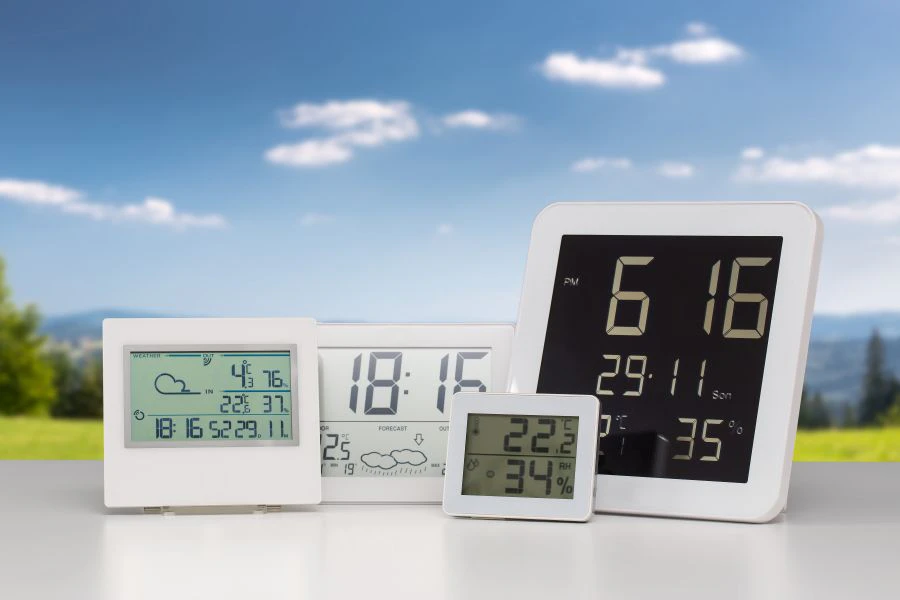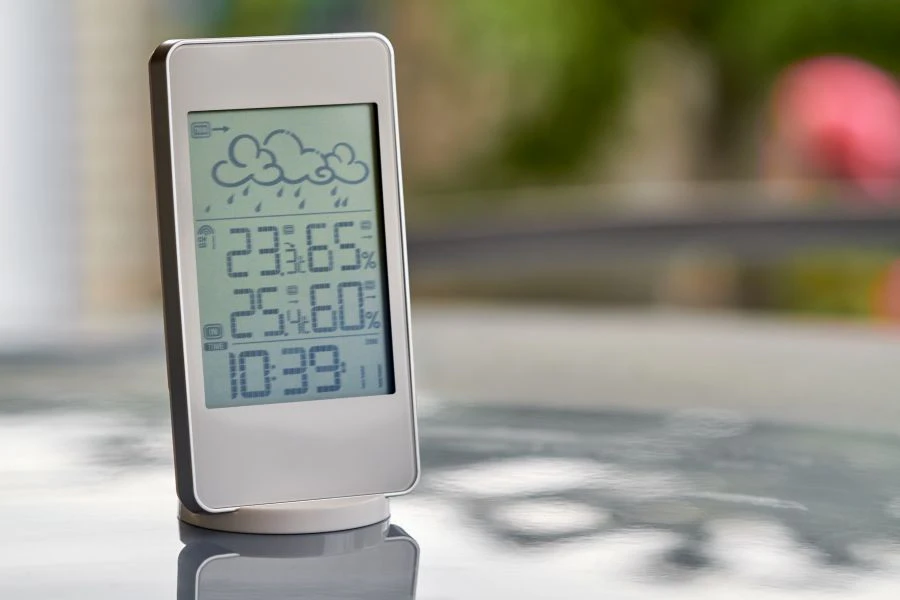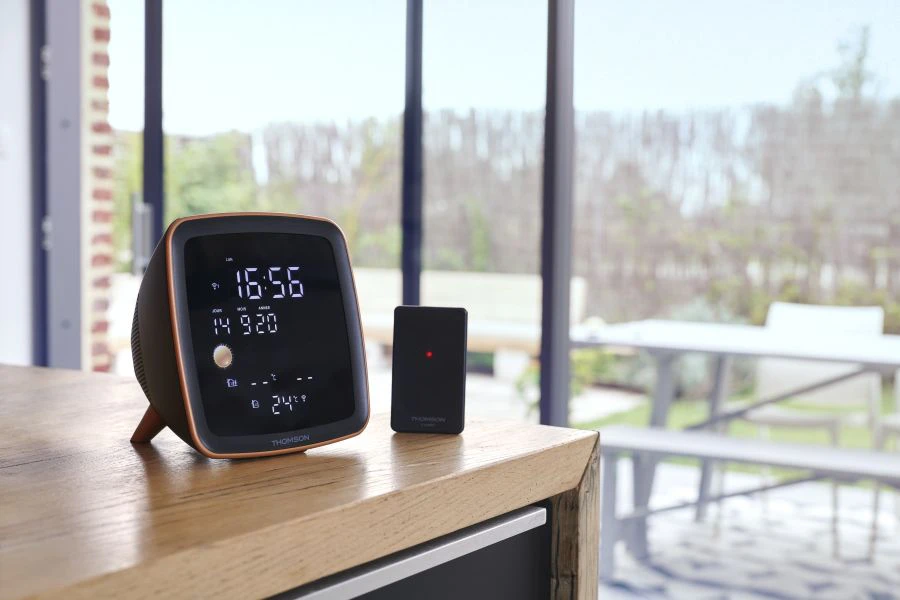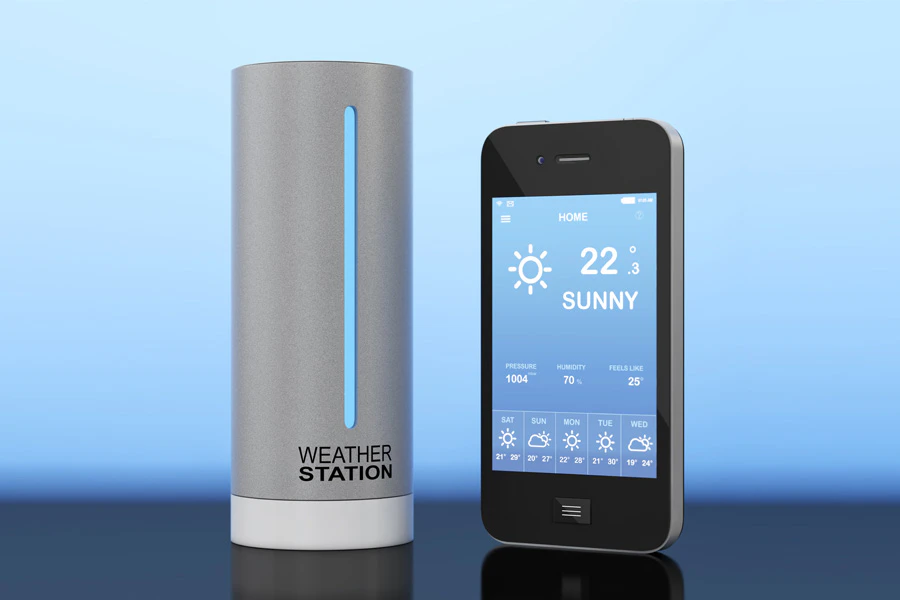
weather station
A complete and precise device
If you can have a glimpse of the weather by looking out the window, on the other hand, to know in addition and in detail information such as the current temperature, atmospheric pressure and humidity level where you are living, you do not really have any other solution than to equip yourself with a weather station. Indeed, if your smartphone can give you general information on the weather in your city, it is based on data provided by national services, and not on local data. The weather station therefore presents itself as a basic tool that is more complete and more precise.

The weather station in the digital age
For a long time, the weather station was assimilated to an installation at the bottom of the garden, composed of a thermometer under shelter, a rain gauge to measure the rain, a barometer for atmospheric pressure or even an anemometer intended to record wind speed. We also think of indoor weather stations with three analog dials made up of a thermometer, a hygrometer and a barometer. Today, this type of device is more a decorative object than anything else.
Indeed, today, the weather station is, most of the time, digital. The electronic weather station generally consists of two modules: on one side, a box equipped with a screen, which gives various indications in real time, and on the other, a weather sensor, which is installed outside your home, on a balcony or a window sill. The weather sensor measures various data and transmits them to the station via radio waves. Different models of Thomson weather stations work on this principle, which is quite simple.
How to choose your weather station?
Basically, weather stations equipped with a weather sensor provide a wealth of information that goes beyond mere outdoor and indoor temperatures. Most also give atmospheric pressure and humidity percentage, outdoors, but sometimes indoors as well. Some models may also be checking the quality of indoor air, expressed through the level of CO², or the level of outdoor pollution provided by data on the Internet.
Some weather stations can also be connected to additional modules, such as an anemometer or a rain gauge, which thus provide access to ever more data. But this type of weather station is more expensive, and it does not necessarily target the same audience. It should be taken into consideration that installing a rain gauge or an anemometer on a balcony can be particularly complicated since very often the configuration of the premises is designed to protect them from the wind and rain. Before investing in an advanced model or additional accessories, it is therefore important to ensure that they are perfectly usable, otherwise the measurements will be distorted and therefore useless. It should also be noted that not all digital weather stations are necessarily connected to the Internet, and it is therefore not always possible to access their readings from a smartphone or a computer.
Finally, the last important point, take the time to check the range of the weather sensor to be installed outdoors. The goal is to make sure that the weather station installed inside will be able to correctly receive the transmitted information, from the place where you plan to position it. If the range covered by the model you are interested in seems too short, it may be necessary to revise your plans, or choose another model.


A specific weather station for each use case.
In short, the choice of a weather station should be guided by your desires and your information needs, but also by the locations available to position the weather sensor and the weather station box. There are models equipped with basic features from around 50 euros, while the more advanced models, which connect to the Internet and are associated with a mobile application, can cost several hundred euros if you invest in additional weather sensors.
Note, moreover, that some models can be versatile: this is the case of the weather station CT500BT from Thomson, which also acts as a dual alarm clock radio, and a Bluetooth speaker. Sold with its wireless sensor to be installed outside, it allows you to have an overview, as soon as you wake up, of the weather conditions of the day, both inside and outside. As an added bonus, you can use it to listen to music from a tablet or smartphone paired via Bluetooth with the device. Easy to use, this weather station, like many others, nevertheless needs to be correctly configured and installed for it to function optimally.
How to install a digital weather station?
If you have followed our advice on choosing the ideal weather station for you, you should therefore be in possession of a model whose range corresponds to the installation you wish to set up. Ideally, the distance between the weather sensor and the main weather station box should be as short as possible in all cases. When this is not possible, be sure in any case to limit as much as possible the presence of walls between the weather sensor and the main weather station box.
The ideal is to install your weather sensor on a window sill, in the shade: in fact, placing a sensor in direct sunlight risks falsifying the measurements, since the temperature is always measured "under cover". Also, even though weather station sensors are designed to withstand high and very low temperatures, as well as inclement weather, that doesn't mean testing them is mandatory. Protecting as much as possible the outdoor sensor module of your weather station ensures that you may use it further reliably for many years to come.
The indoor module, for its part, can easily find its place in the room where the window, balcony, terrace or even the loggia is located, which accommodates the weather sensor. This way you can be sure that the reception will be optimal. For example, if you opt for the Thomson CT500BT station and you want to install it in your room to use it as a clock radio, it is on the window sill of this room that you should try to install the weather sensor in priority. On most models, a small light indicates the level of data reception. You can use it to best position those two devices.
Finally, note that if the indoor module is plugged into the mains, the one to be installed outdoors operates using one or more batteries. The autonomy of this type of device is several months, but the farther the weather sensor is from its base, the more it must "boost" the strength of its emitting signal, and the more quickly its autonomy is reduced. Remember to have spare batteries available so that you can change them as soon as the need arises.


A smart device, connected every day
To summarize, the weather station is a useful and fun device that accompanies you on a daily basis. More precise than the weather information that can be seen on TV broadcasts and on generic smartphone applications, it displays local and real-time data, which allows you to connect, in a certain way, with nature and its elements. Something to make you want to equip yourself and play with the rain and the good weather!

 Denmark (Danish)
Denmark (Danish)  Deutschland (Deutsch)
Deutschland (Deutsch)  España (Español)
España (Español)  France (Français)
France (Français)  Italia (Italiano)
Italia (Italiano)  Nederlands (Dutch)
Nederlands (Dutch)  Polska (Polski)
Polska (Polski)  Russia (Russian)
Russia (Russian)  Sweden (Swedish)
Sweden (Swedish)  Turkey (Turkish)
Turkey (Turkish)  Ukraine (English)
Ukraine (English)  United Kingdom (English)
United Kingdom (English)  USA (English)
USA (English)  China (Chinese)
China (Chinese)  Hong Kong (English)
Hong Kong (English)  India (English)
India (English)  Indonesia (English)
Indonesia (English)  Lebanon (English)
Lebanon (English)  Saudi Arabia (English)
Saudi Arabia (English)  Thailand (English)
Thailand (English)  Vietnam (English)
Vietnam (English)  Algeria (Français)
Algeria (Français)  Egypt (English)
Egypt (English)  Australia (English)
Australia (English)